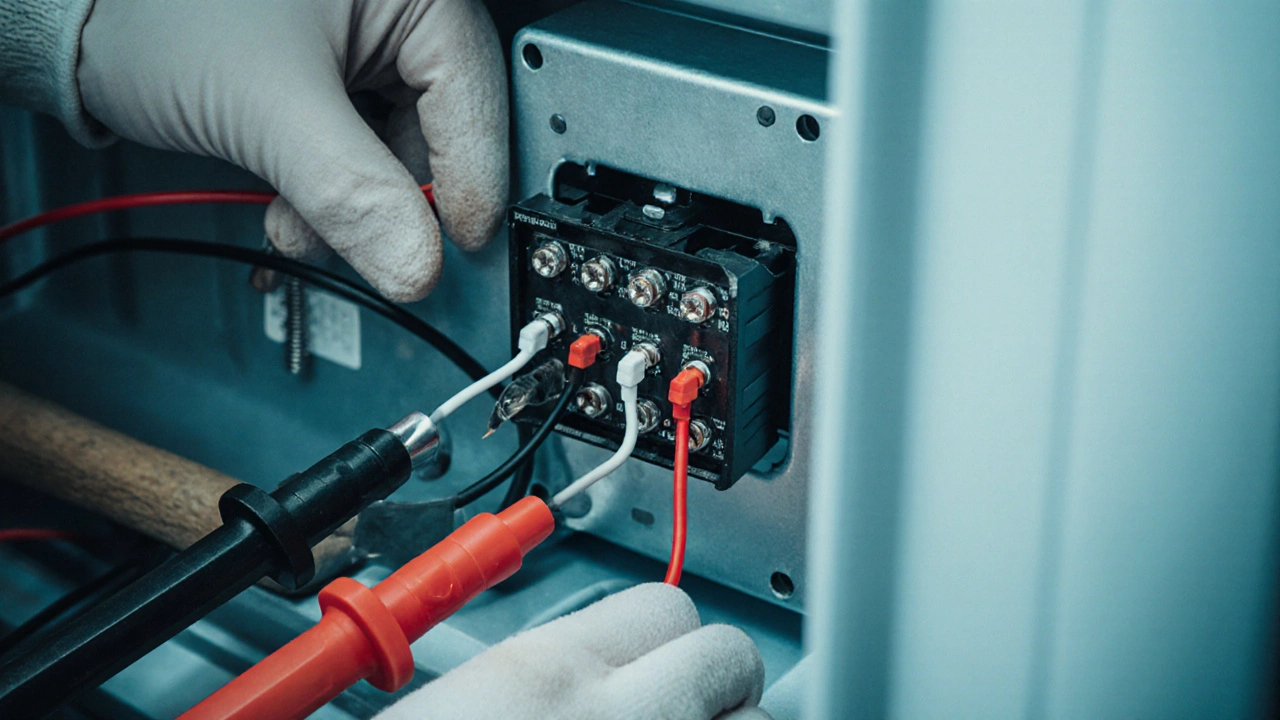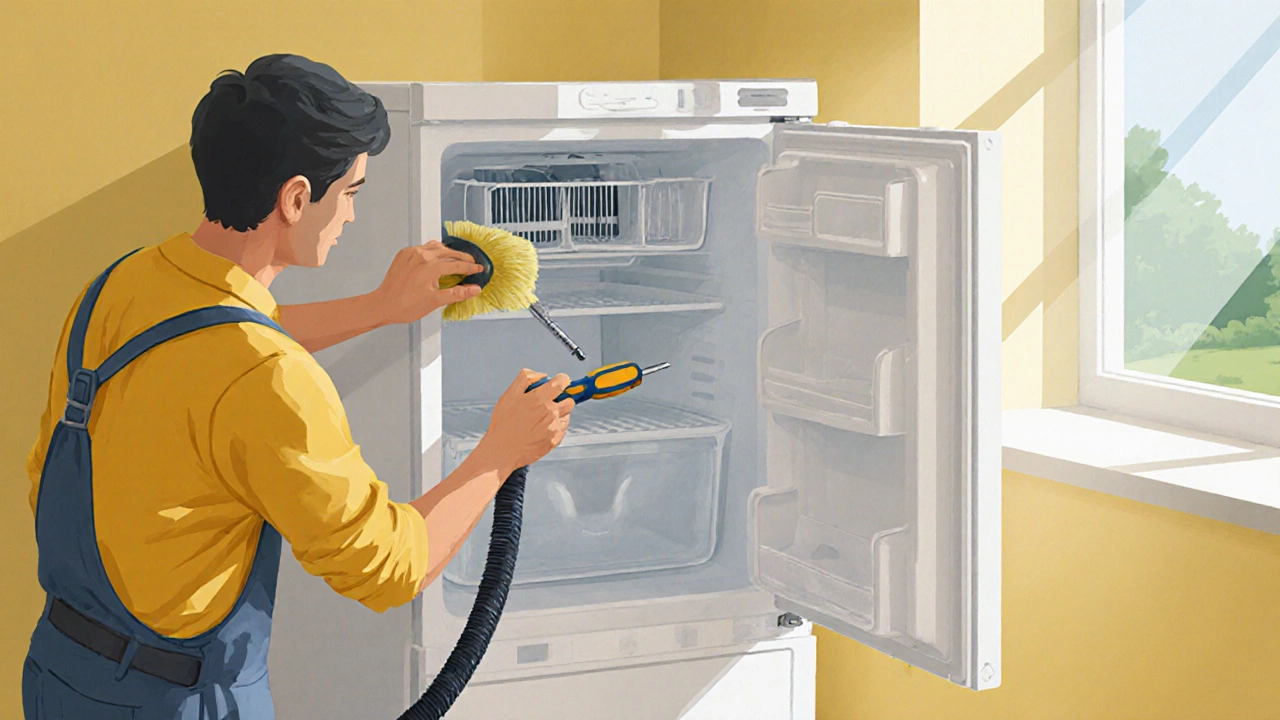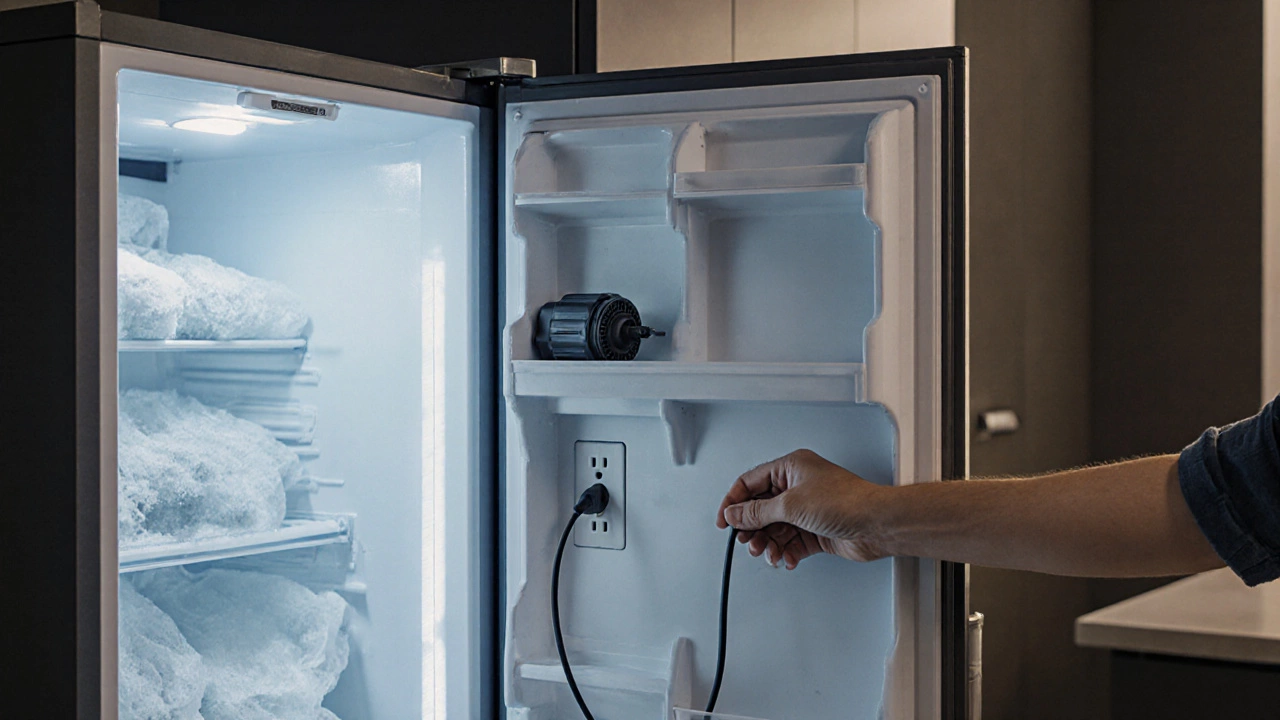Freezer Compressor Reset Helper
Compressor Reset Methods Overview
Select the method that best matches your situation to get detailed instructions.
Select a Method Above
To begin, choose one of the three reset methods by clicking the corresponding button above. Each method has its own set of steps and requirements.
Safety Checklist
- Unplug the freezer or turn off the circuit breaker
- Wear insulated gloves and safety glasses
- Have a multimeter ready for testing
- Keep a flashlight handy for interior inspection
- Prepare a container for loose screws
When your freezer stops keeping food frozen, the first thing you wonder is whether the compressor needs a reset. Freezer compressor is a sealed motor that circulates refrigerant through the cooling system, creating the low‑temperature environment you rely on. A temporary glitch, power surge, or a stuck relay can cause the compressor to shut off, and a simple reset often brings it back to life without calling a technician.
Key Takeaways
- Resetting the compressor is safe if you follow the step‑by‑step safety checklist.
- Power‑cycle, thermostat reset, and relay reset are the three main methods.
- If the compressor won’t restart after a reset, inspect the circuit breaker, defrost timer, and temperature sensor for deeper issues.
- Regular cleaning of the condenser coil and checking the power cord can prevent future compressor trips.
- Keep a basic toolbox handy: screwdriver, multimeter, and a flashlight.
Understanding Why a Compressor Needs a Reset
The compressor operates under strict electrical and pressure limits. If it detects an overload, high temperature, or a refrigerant pressure abnormality, an internal safety switch (often called a compressor relay) will shut it down. Common triggers include:
- Sudden power outage or surge - the relay may latch.
- Dirty condenser coil causing the motor to overheat.
- Faulty thermostat sending wrong temperature signals.
- Ice buildup in the freezer compartment that disables the defrost timer.
Most of these issues can be cleared with a reset, but it’s essential to verify that the underlying cause isn’t recurring.
Safety First - What You Need Before Starting
- Unplug the freezer or switch off the dedicated circuit breaker to eliminate electric shock risk.
- Wear insulated gloves and safety glasses.
- Have a multimeter ready to test voltage and continuity.
- Keep a flashlight handy for interior inspection.
- Prepare a small container for any loose screws.
Following these precautions keeps you safe and ensures you don’t accidentally damage delicate components.

Method 1 - Simple Power‑Cycle Reset
This is the quickest way and works for most modern freezers.
- Locate the freezer’s power plug. Pull it out and wait 5minutes. The waiting period lets the compressor’s internal capacitor discharge and clears the safety latch.
- While you wait, open the freezer door, remove any food, and wipe down the interior to check for ice buildup.
- After 5minutes, plug the freezer back in. Listen for the compressor’s start‑up click and feel a gentle vibration indicating it’s running.
- Allow the freezer to run for at least 30minutes before restocking food. Check that the temperature gauge (or built‑in digital display) reads below0°F (‑18°C).
If the compressor starts, you’ve likely resolved a temporary overload. If not, move on to the thermostat reset.
Method 2 - Thermostat Reset
Some freezers have a hidden reset button on the thermostat or temperature control board.
- With the freezer still unplugged, locate the temperature dial or digital control panel. Look for a small recessed button labeled “RESET” or a pin‑hole.
- Using a paperclip, press and hold the button for 3seconds. This forces the thermostat’s microcontroller to clear any error codes.
- Plug the freezer back in and set the desired temperature (usually0°F). The compressor should engage within a couple of minutes.
If the compressor still refuses to start, the issue may be with the compressor relay or a deeper electrical fault.
Method 3 - Compressor Relay Reset (Advanced)
This method involves accessing the relay located on the compressor’s wiring harness. Only attempt if you’re comfortable handling low‑voltage components.
- Remove the back panel of the freezer (usually secured with 2‑4 screws). Keep the screws in a container.
- Identify the relay - it’s a small rectangular component with three wires (often black, red, and white). It’s mounted near the compressor shaft.
- Using a multimeter, test for continuity across the relay terminals. A good relay shows continuity on the “start” terminals and open circuit on the “run” terminals when the compressor is off.
- If the relay is stuck closed, gently tap it with a rubber mallet. Sometimes the internal contacts release.
- For a more thorough reset, unscrew the relay, pull the wires, wait 30seconds, then reconnect and screw it back in place.
- Replace the back panel, plug the freezer in, and listen for the compressor start‑up.
Should the compressor still not fire, you may have a burnt‑out motor or a faulty start capacitor - both require professional service.
Additional Troubleshooting Checklist
If resetting didn’t solve the problem, run through this quick checklist before calling a repair service.
- Check the power cord: Look for cuts, frays, or burnt plugs. A damaged cord can cause intermittent power loss.
- Inspect the circuit breaker: Ensure the breaker hasn’t tripped. Reset it if necessary.
- Clean the condenser coil: Dust or pet hair reduces heat exchange, making the compressor overheat. Vacuum the coil (usually at the back or beneath the freezer) once a year.
- Verify the defrost timer: If ice builds up in the freezer, the timer may have failed. A continuous ice layer blocks airflow and forces the compressor to shut down.
- Test the temperature sensor: Use a multimeter set to ohms; a typical sensor reads about 10kΩ at 0°C. Too high/low values indicate failure.

When to Call a Professional
Even the most diligent DIYer should know when to step back. Call a licensed appliance technician if you encounter any of the following:
- Repeated compressor trips after multiple resets.
- Burnt smell or visible sparks from the compressor housing.
- Compressor humming loudly but not turning on - likely a seized motor.
- Low refrigerant pressure (you’ll need a certified technician to handle refrigerant).
- Complex electrical diagnostics beyond relay testing.
Preventive Maintenance Tips
Regular care can keep the compressor happy for years.
- Schedule a quarterly cleaning of the condenser coil with a soft brush.
- Keep the freezer door seals clean and check for gaps; a tight seal reduces workload on the compressor.
- Defrost manually if frost exceeds a quarter‑inch thickness; excessive ice forces the defrost timer to work harder.
- Use a surge protector for the freezer plug if you live in an area with frequent power spikes.
- Record the date of each reset; a pattern may reveal a failing component early.
Quick Reference Table - Reset Methods Comparison
| Method | Tools Required | Typical Time | Best For |
|---|---|---|---|
| Power‑Cycle | None | 5-10min | Recent power outage or simple overload |
| Thermostat Reset | Paperclip | 2-3min | Temperature control error codes |
| Compressor Relay Reset | Screwdriver, multimeter, rubber mallet | 15-20min | Relay stuck closed or stuck open |
Frequently Asked Questions
Why does my freezer make a humming sound but stay warm?
The humming usually means the compressor’s motor is trying to start, but the start capacitor or relay may be faulty. A reset can clear a temporary latch, but if the humming persists, test the start capacitor with a multimeter or replace the relay.
Can a frozen freezer be fixed without resetting the compressor?
Yes. Often the problem is a clogged condenser coil or a faulty door seal. Cleaning the coil and ensuring a tight seal can restore cooling without touching the compressor.
How often should I reset my freezer compressor as preventive maintenance?
A full reset isn’t needed regularly. Perform a power‑cycle once a year during deep cleaning. If you notice temperature fluctuations, a quick reset can help before calling a tech.
Is it safe to reset the compressor while the freezer is still plugged in?
No. Always unplug the unit or switch off the dedicated breaker first. Working on live components can cause electric shock or damage the relay.
My freezer’s compressor clicks loudly but never starts - what’s wrong?
A loud click often indicates the overload protector is tripping. Check the power cord for damage, verify the circuit breaker isn’t tripped, and test the start capacitor. If these are OK, the compressor motor may be seized and needs professional replacement.
By following the steps above, most homeowners can safely reset a freezer compressor and get their appliance back to freezing temps. Remember: safety first, diagnose the root cause, and don’t hesitate to call a qualified technician if the problem persists.
